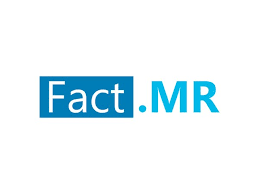Global Cardiac Prosthetic Devices Market is Set to Hit USD 17.10 Billion by 2035, Driven by Aging Population Trends

The global cardiac prosthetic devices market is set for steady and significant growth, with its valuation projected to rise from USD 8.41 billion in 2025 to USD 17.10 billion by 2035, reflecting a compound annual growth rate (CAGR) of 6.5%. This expansion is driven by the increasing prevalence of cardiovascular diseases (CVDs), an aging global population, and continuous technological advancements in cardiac care. Cardiac prosthetic devices, including pacemakers and heart valves, are essential for managing conditions like heart failure, arrhythmias, and valvular heart diseases, improving patient outcomes and quality of life. The market's growth underscores the rising demand for innovative, minimally invasive solutions that address the growing burden of heart-related ailments worldwide.
For More Insights into the Market, Request a Sample of this Report: https://www.factmr.com/connectus/sample?flag=S&rep_id=7718
Market Segmentation and Trends:
The cardiac prosthetic devices market is segmented by product type, end user, and region, providing a comprehensive view of its dynamics. Product types include implantable pacemakers (28% market share in 2025), external pacemakers, transcatheter heart valves (25% share), tissue heart valves, and mechanical heart valves. Implantable pacemakers and transcatheter heart valves dominate due to their efficacy in treating arrhythmias and valvular diseases. End users encompass hospitals (55% share in 2025), specialty centers (20%), ambulatory surgical centers, and others, with hospitals leading due to their advanced infrastructure for complex procedures.
Regionally, North America holds the largest share, while Asia Pacific is witnessing rapid growth driven by healthcare investments. Key trends include the shift toward minimally invasive procedures like transcatheter aortic valve replacement (TAVR), the integration of AI for personalized treatments, and the development of bioresorbable and 3D-printed valves for improved biocompatibility and reduced complications.
Driving Factors Behind Market Growth:
Several factors are fueling the cardiac prosthetic devices market's growth. The rising incidence of CVDs, with over 17 million annual deaths globally, is a primary driver, particularly among the elderly population, which is projected to reach 1.5 billion by 2050. Technological advancements, such as leadless pacemakers and AI-enhanced diagnostic tools, are enhancing device precision and patient safety. Increasing healthcare investments in emerging regions, like Asia Pacific and Latin America, are improving access to advanced cardiac care.
Government initiatives for universal healthcare and awareness campaigns about heart health are boosting adoption. Additionally, the preference for minimally invasive surgeries, which reduce recovery time and risks, is driving demand for transcatheter and sutureless valves, further propelling market expansion.
Recent Developments and Key Players:
The cardiac prosthetic devices market is highly competitive, with key players focusing on innovation, regulatory approvals, and strategic partnerships to maintain market leadership. In February 2025, LivaNova PLC launched its Perceval Plus sutureless heart valve across Asia-Pacific, offering improved durability and ease of implantation for aortic valve replacement. Medtronic and Edwards Lifesciences have advanced TAVR systems, with Edwards' SAPIEN series gaining traction for high-risk patients. Other developments include the integration of AI for real-time device monitoring and the exploration of 3D-printed, patient-specific valves.
Key players include Edwards Lifesciences Corporation (20-25% market share), Abbott Laboratories (18-22%), Boston Scientific Corporation (15-20%), Medtronic plc (12-17%), Biotronik (8-12%), CryoLife, Inc., TTK Healthcare, Venus Medtech, Vitatron, Abiomed, Inc., AtriCure, Inc., Braile Biomedica, Labcor Laboratories, Lepu Medical Technology Co. Ltd., Lifetech Scientific, and others (combined 25-35%).
Competitor analysis reveals a focus on technological differentiation and geographic expansion. Established companies like Edwards and Abbott emphasize high-quality, premium products with strong clinical evidence, while smaller firms target emerging markets with cost-effective solutions. Strategies include mergers and acquisitions to bolster portfolios, such as integrating AI and robotic-assisted technologies, and collaborations with hospitals for clinical trials. Price competition is intense, with firms balancing innovation costs and affordability to capture diverse market segments.
Regional Insights and Opportunities:
North America dominates the cardiac prosthetic devices market, with the U.S. projected to reach USD 11.2 billion by 2035 at a 7.1% CAGR, driven by advanced healthcare systems and high CVD prevalence. Europe follows, with the UK (6.4% CAGR), France (5.9%), Germany (6.2%), and Italy (5.7%) benefiting from robust medical infrastructure. Asia Pacific is the fastest-growing region, led by China (USD 2.0 billion in 2025, 8.3% CAGR) and Japan (5.8% CAGR), fueled by aging populations and government healthcare initiatives. South Korea (6.5% CAGR), Australia (6.0%), and New Zealand (5.6%) also show strong potential. Latin America and the Middle East & Africa offer opportunities through public-private partnerships and mobile surgical units to address rural healthcare gaps.
Browse Full Report: https://www.factmr.com/report/cardiac-prosthetic-devices-market
Challenges and Future Outlook:
The cardiac prosthetic devices market faces challenges, including high costs of implants and procedures, limiting adoption in low-income regions, and reimbursement issues that affect accessibility. Rural areas often lack specialized cardiac care, exacerbating disparities. Regulatory hurdles and the need for extensive clinical trials can delay innovations. However, the market's future is promising, with opportunities in AI-driven personalization, bioresorbable materials, and expanded access in emerging markets. The focus on minimally invasive and connected devices will drive growth, improving outcomes for millions. By 2035, the market is set to thrive, supported by clinical needs, technological ingenuity, and global healthcare advancements.
- Art
- Causes
- Crafts
- Dance
- Drinks
- Film
- Fitness
- Food
- Jocuri
- Gardening
- Health
- Home
- Literature
- Music
- Networking
- Alte
- Party
- Religion
- Shopping
- Sports
- Theater
- Wellness


